The Mechanism of Plugging Open-Pit Mine Cannon Holes and the Modification of Plugging Materials
Abstract
1. Introduction
2. Materials and Methods
2.1. Effect of Blockage on the Effectiveness of Step Blasting
The Effect of Blockage on the Explosion of Gas in the Shell Hole
2.2. Analysis of Blockage Material Force and Damage Deformation
2.2.1. Plugging Material Force Analysis
- (1)
- Burst wave into the blockage material state
- (2)
- The blast wave enters the blocking material propagation state
2.2.2. Analysis of the Damage Process of Blockage Material by Dynamic Load Impact
2.3. Analysis of Gun Hole Blockage Movement Law
2.3.1. Numerical Simulation Study of Blockage Material Motion
- (1)
- Analysis of the dispersion process of the blockage
- (2)
- Analysis of motion parameters of the blockage body
2.3.2. High-Speed Photography to Monitor Clogging Punch Movement
3. Results and Discussion
3.1. Indoor Test Results
3.1.1. Experimental Design for Geopolymers
3.1.2. Mechanical Properties of Geopolymer-Modified Rock Powder Plugging Materials
3.2. Field Test Results
Plugging Material Modification Field Test Engineering Applications
3.3. Blasting Test Engineering Effect Analysis Study
3.3.1. Blocking Effect of Sectional Charging
3.3.2. Blasting Block Size Distribution and Large Block Rate
4. Conclusions
Author Contributions
Funding
Institutional Review Board Statement
Informed Consent Statement
Data Availability Statement
Acknowledgments
Conflicts of Interest
References
- Koteleva, N.; Frenkel, I. Digital Processing of Seismic Data from Open-Pit Mining Blasts. Appl. Sci. 2021, 11, 383. [Google Scholar] [CrossRef]
- Wang, Z.X.; Jia, G. Existence and multiplicity of nontrivial solutions to the modified Kirchhoff equation without the growth and Ambrosetti-Rabinowitz conditions. Electron. J. Qual. Theory Differ. Equ. 2021, 1–18. [Google Scholar] [CrossRef]
- Wang, Z.M.; Zhou, W.; Jiskani, I.M.; Ding, X.H.; Luo, H.T. Dust pollution in cold region Surface Mines and its prevention and control*. Environ. Pollut. 2022, 292, 118293. [Google Scholar] [CrossRef]
- Wang, Z.M.; Zhou, W.; Jiskani, I.M.; Luo, H.T.; Ao, Z.C.; Mvula, E.M. Annual dust pollution characteristics and its prevention and control for environmental protection in surface mines. Sci. Total Environ. 2022, 825, 153949. [Google Scholar] [CrossRef]
- Luo, H.T.; Zhou, W.; Jiskani, I.M.; Wang, Z.M. Analyzing Characteristics of Particulate Matter Pollution in Open-Pit Coal Mines: Implications for Green Mining. Energies 2021, 14, 2680. [Google Scholar] [CrossRef]
- Li, P.; Zhang, X.D.; Li, H. Technology of Coupled Permeability Enhancement of Hydraulic Punching And Deep-Hole Pre-Splitting Blasting in a “Three-Soft” Coal Seam. Mater. Tehnol. 2021, 55, 89–96. [Google Scholar] [CrossRef]
- Liu, Y.; Chen, J.T.; Yao, S.Y.; Zhang, C.X. Study on the Resource Comprehensive Utilization of Mine Solid Waste. In Proceedings of the Global Conference on Civil, Structural and Environmental Engineering/3rd International Symp on Multi-field Coupling Theory of Rock and Soil Media and its Applications, China Three Gorges University, Yichang, China, 20–21 October 2012; pp. 586–591. [Google Scholar]
- Gallant, A.P.; Finno, R.J. Measurement of Gas Released during Blast Densification. Geotech. Test. J. 2017, 40, 1011–1025. [Google Scholar] [CrossRef]
- Akhmetov, A.R.; Poleev, V.G.; Nikitin, O.A.; Kargin, A.A.; Ul’yanov, S.M.; Stolbikov, M.Y.; Lobachev, A.S.; Protas, R.V.; Starostenko, D.A. Recording the Onset of Detonation in the Depth of an Explosive by X-ray and Electric Contact Methods. Combust. Explos. Shock Waves 2022, 58, 106–113. [Google Scholar] [CrossRef]
- Langdon, G.; Nurick, G.; Du Plessis, N.; Rossiter, I. Using perforated plates as a blast wave shielding technique for application to tunnels. In Proceedings of the 3rd International Workshop on Performance, Protection and Strengthening of Structures Under Extreme Loading, Lugano, Switzerland, 30 August–1 September 2011; pp. 467–472. [Google Scholar]
- Lou, X.M.; Zhou, P.; Yu, J.; Sun, M.W. Analysis on the impact pressure on blast hole wall with radial air-decked charge based on shock tube theory. Soil Dyn. Earthq. Eng. 2020, 128, 105905. [Google Scholar] [CrossRef]
- Chen, W.; Lu, F.; Frew, D.J.; Forrestal, M.J. Dynamic compression testing of soft materials. J. Appl. Mech. Trans. Asme 2002, 69, 214–223. [Google Scholar] [CrossRef]
- Yao, X.H.; Zhang, X.Q.; Zhao, L.M.; Yang, G.T. Experimental study on dynamic mechanical properties of Al2O3 ceramics. In Advances in Engineering Plasticity and Its Applications, Pts 1 and 2; Shen, W.P., Xu, J.Q., Eds.; Key Engineering Materials; Elsevier: Cham, Switzerland, 2004; Volume 274–276, pp. 847–852. [Google Scholar]
- Mojtaba, Y.; Daniyal, G.; Saeed, J. Development of a 3d numerical model for simulating a blast wave propagation system considering the position of the blasting hole and in-situ discontinuities. Rud.—Geol.—Naft. Zb. 2022, 37, 68–78. [Google Scholar]
- Yari, M.; Bagherpour, R.; Jamali, S.; Asadi, F. Selection of most proper blasting pattern in mines using linear assignment method: Sungun copper mine. Arch. Min. Sci. 2015, 60, 375–386. [Google Scholar] [CrossRef]
- Wang, Z.K.; Gu, X.W.; Zhang, W.L.; Xie, Q.K.; Xu, X.C.; Wang, Q. Analysis of the Cavity Formation Mechanism of Wedge Cut Blasting in Hard Rock. Shock Vib. 2019, 2019, 1828313. [Google Scholar] [CrossRef]
- Yuan, W.; Su, X.B.; Wang, W.; Wen, L.; Chang, J.F. Numerical study of the contributions of shock wave and detonation gas to crack generation in deep rock without free surfaces. J. Pet. Sci. Eng. 2019, 177, 699–710. [Google Scholar] [CrossRef]
- Guo, X.B.; Xiao, Z.X.; Zhang, J.T. The influence factors and protection measures of flying stone in demolition blast. In Proceedings of the 3rd International Symposium on Safety Science and Technology (2002 ISSST), Tai’an, China, 10–13 October 2002; pp. 1470–1473. [Google Scholar]
- Wang, Q.B.; Zhang, X.; Gong, B.; Shi, Z.Y.; Tian, Y.Y.; Wang, D.; Hu, Z.J.; Sun, W.L.; Li, Z.H.; Zhang, W.X. Study and Application of Rock Breaking Mechanism of Concentrated Water Hydraulic Smooth Blasting in Broken Sand-Stone Geological Conditions. Shock Vib. 2022, 2022, 4999800. [Google Scholar] [CrossRef]
- Wang, Z.L.; Konietzky, H. Modelling of blast-induced fractures in jointed rock masses. Eng. Fract. Mech. 2009, 76, 1945–1955. [Google Scholar] [CrossRef]
- Abbaspour, H.; Drebenstedt, C.; Badroddin, M.; Maghaminik, A. Optimized design of drilling and blasting operations in open pit mines under technical and economic uncertainties by system dynamic modelling. Int. J. Min. Sci. Technol. 2018, 28, 839–848. [Google Scholar] [CrossRef]
- Suazo, G.; Villavicencio, G. Numerical simulation of the blast response of cemented paste backfilled stopes. Comput. Geotech. 2018, 100, 1–14. [Google Scholar] [CrossRef]
- Yadollahi, M.M.; Benli, A.; Demirboga, R. Application of adaptive neuro-fuzzy technique and regression models to predict the compressive strength of geopolymer composites. Neural Comput. Appl. 2017, 28, 1453–1461. [Google Scholar] [CrossRef]
- Ang, L.; Zhen, W. Research on Prediction Method of Blasting Block Degree in Open Pit Mine. In Proceedings of the 2nd International Conference on Mechanical Engineering, Industrial Materials and Industrial Electronics (MEIMIE), Dalian, China, 29–30 March 2019; pp. 21–24. [Google Scholar]
- Yu, Y.Q.; Yan, Z.L.; Qiu, X.D.; Huang, M.K.; Wang, X.F. A fuzzy mathematical model of comprehensive evaluation on blasting effect and its application. In Proceedings of the International Symposium on Mining Science and Safety Technology (ISMSST), Jiaozuo, China, 16–18 April 2002; pp. 259–263. [Google Scholar]
- Yari, M.; Monjezi, M.; Bagherpour, R. A novel investigation in blasting operation management using decision making methods. Rud. Geološko-Naft. Zb. 2014, 29, 69–79. [Google Scholar]
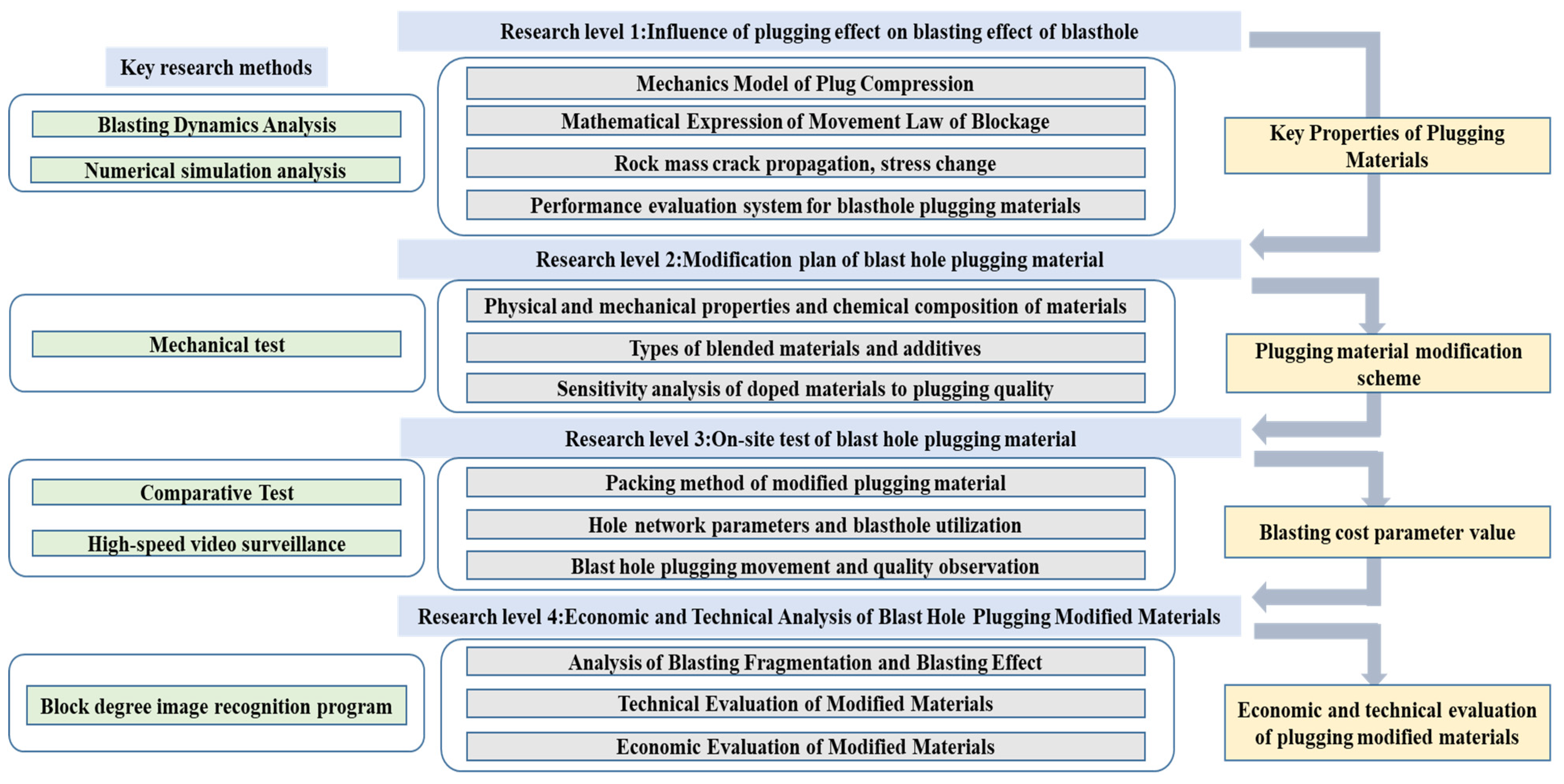
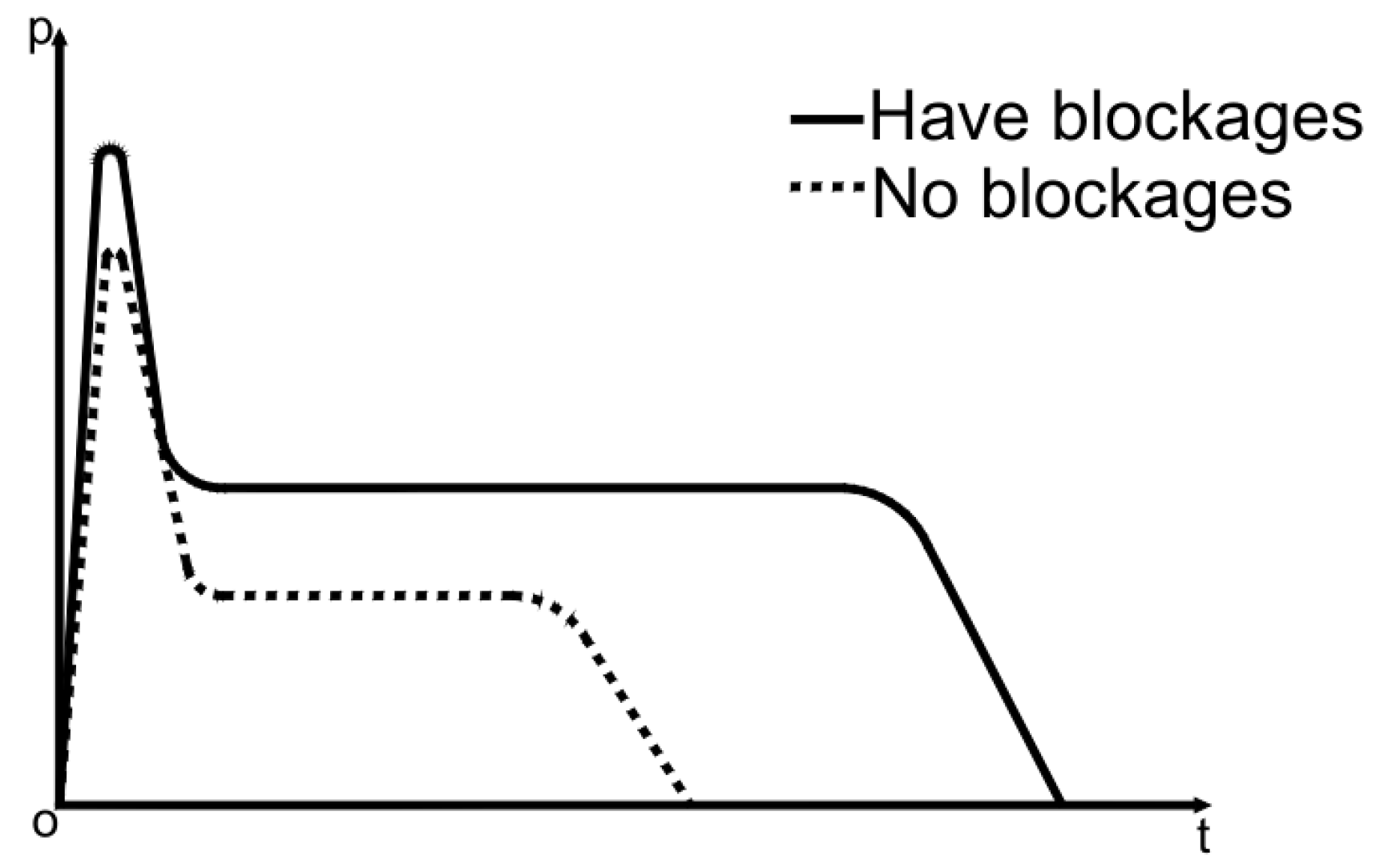
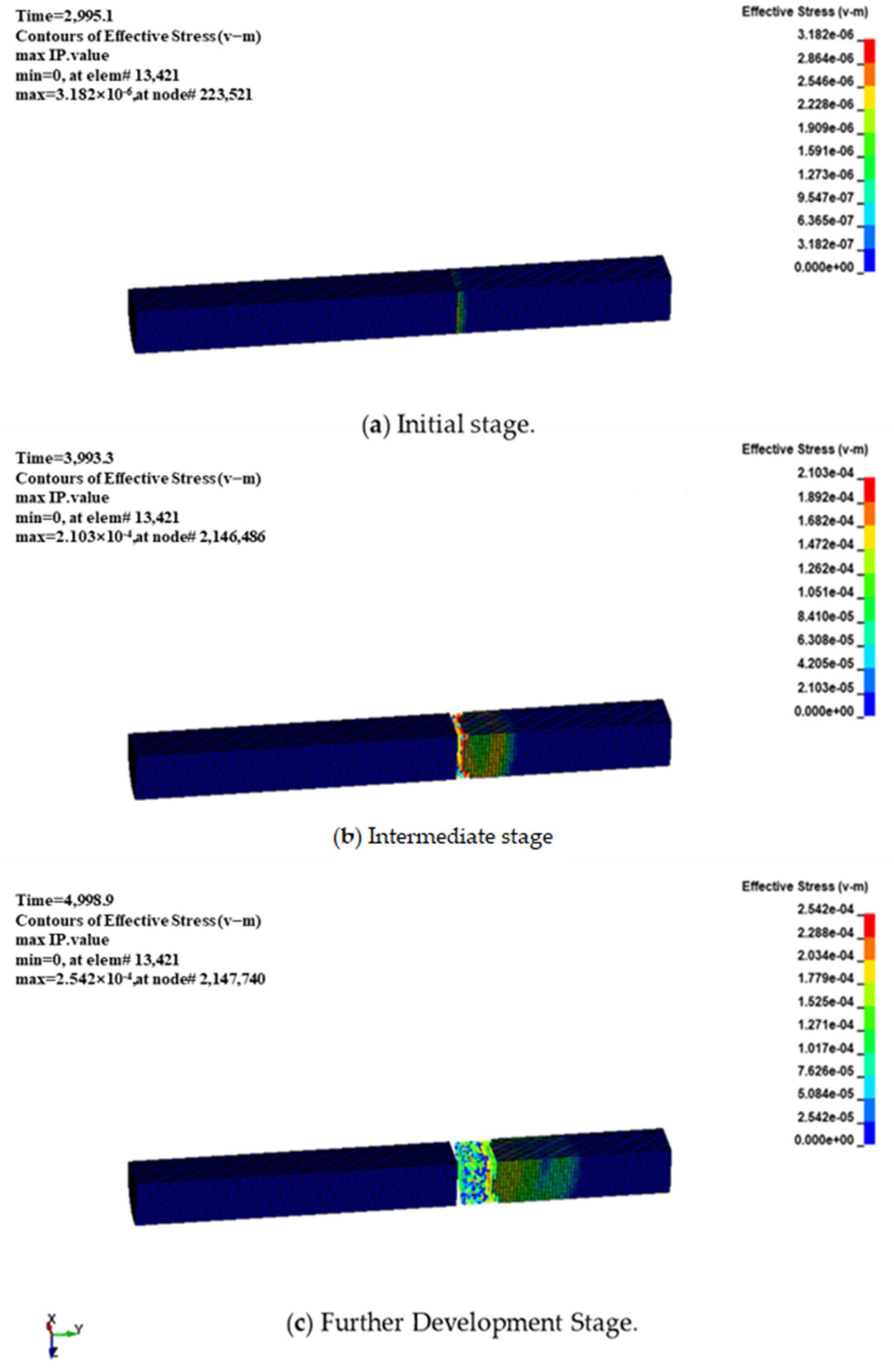
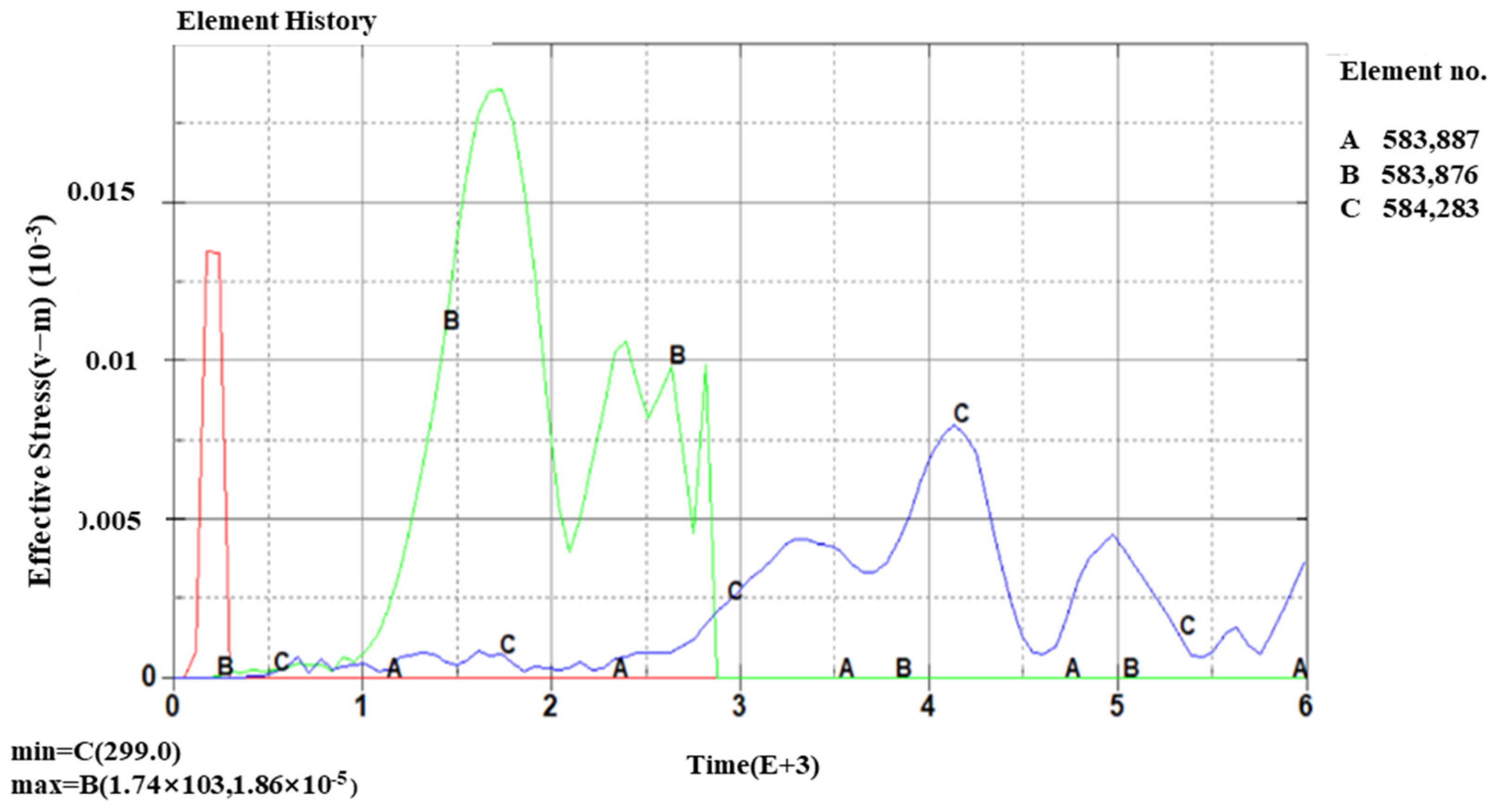
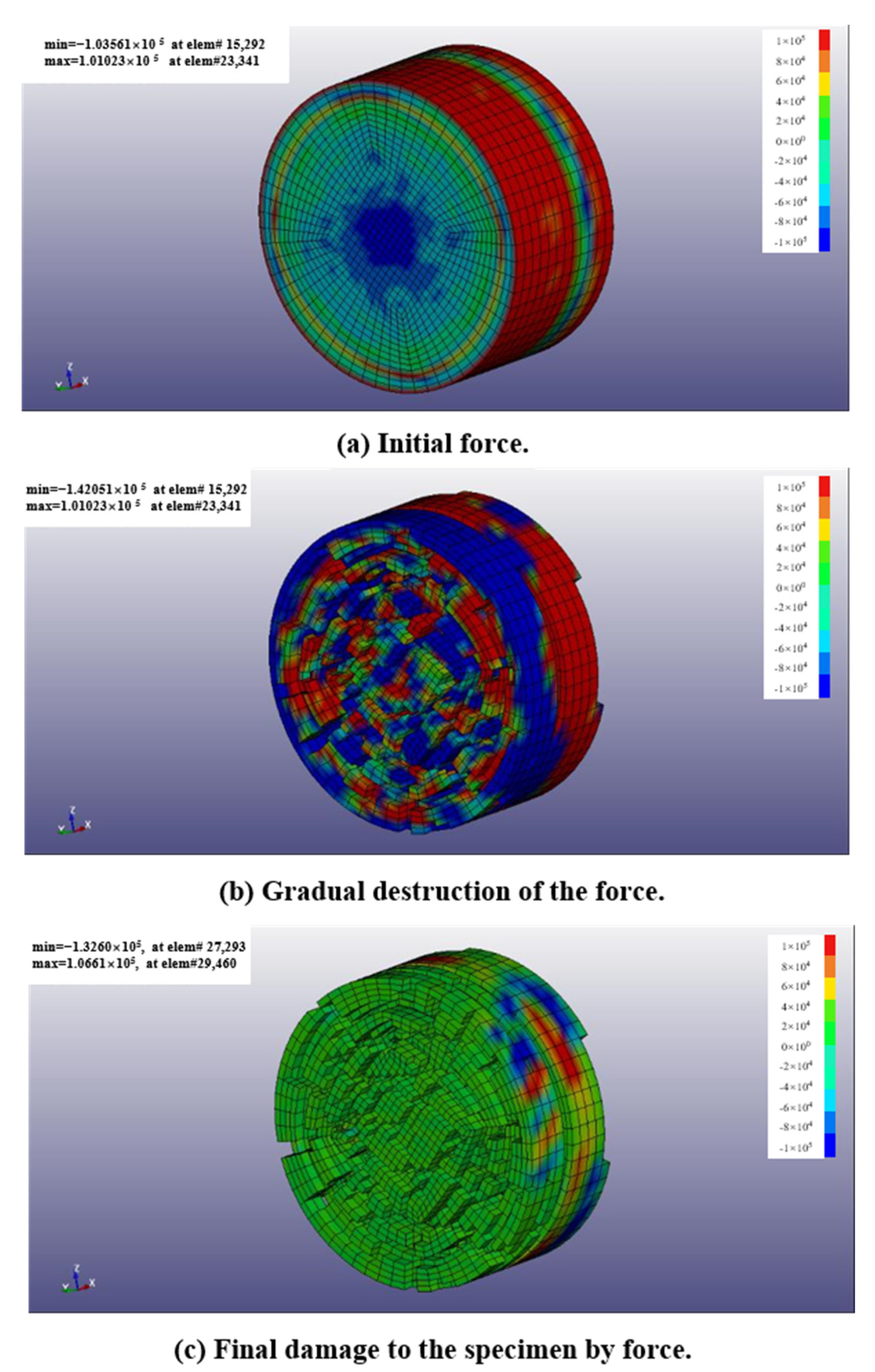
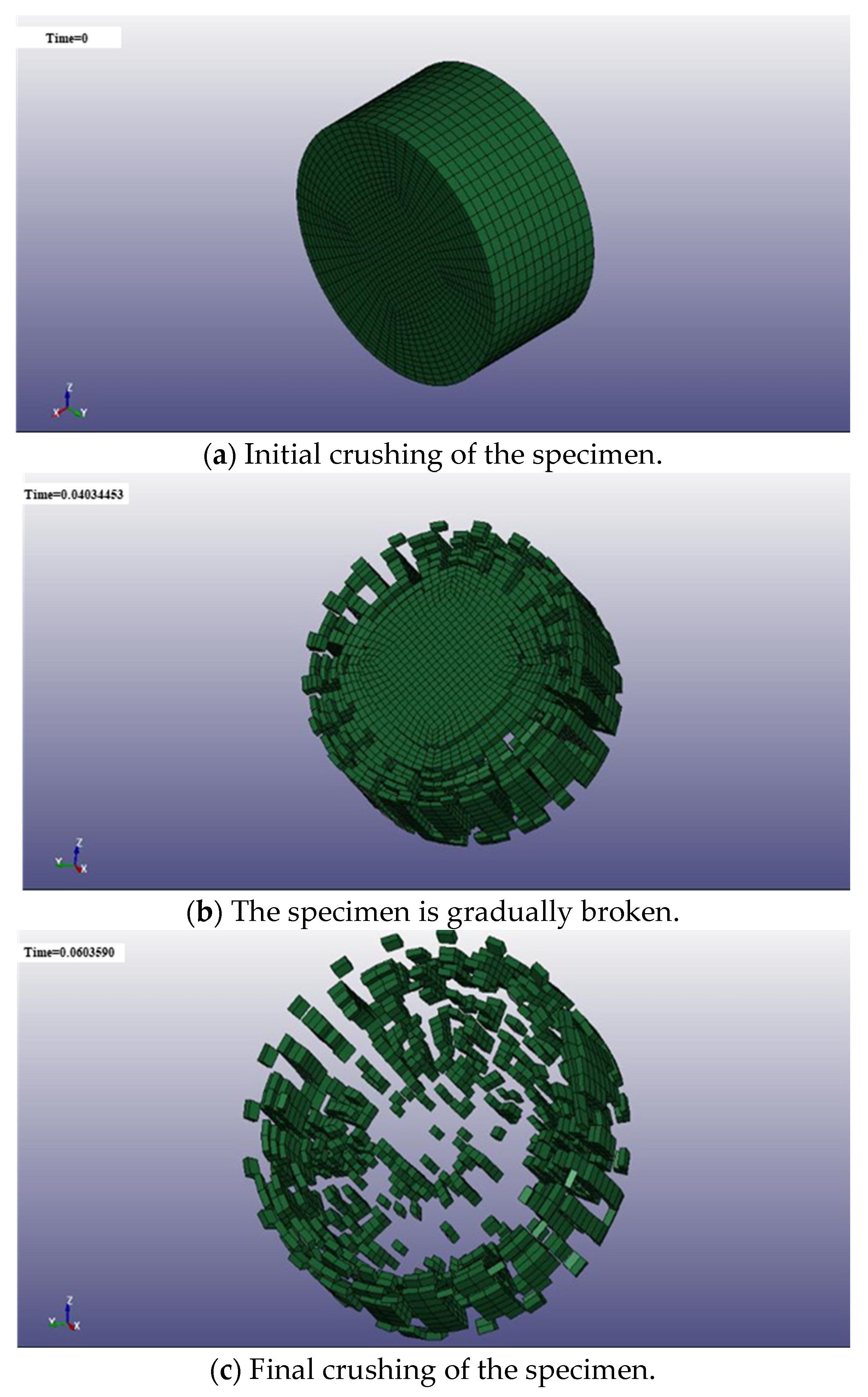
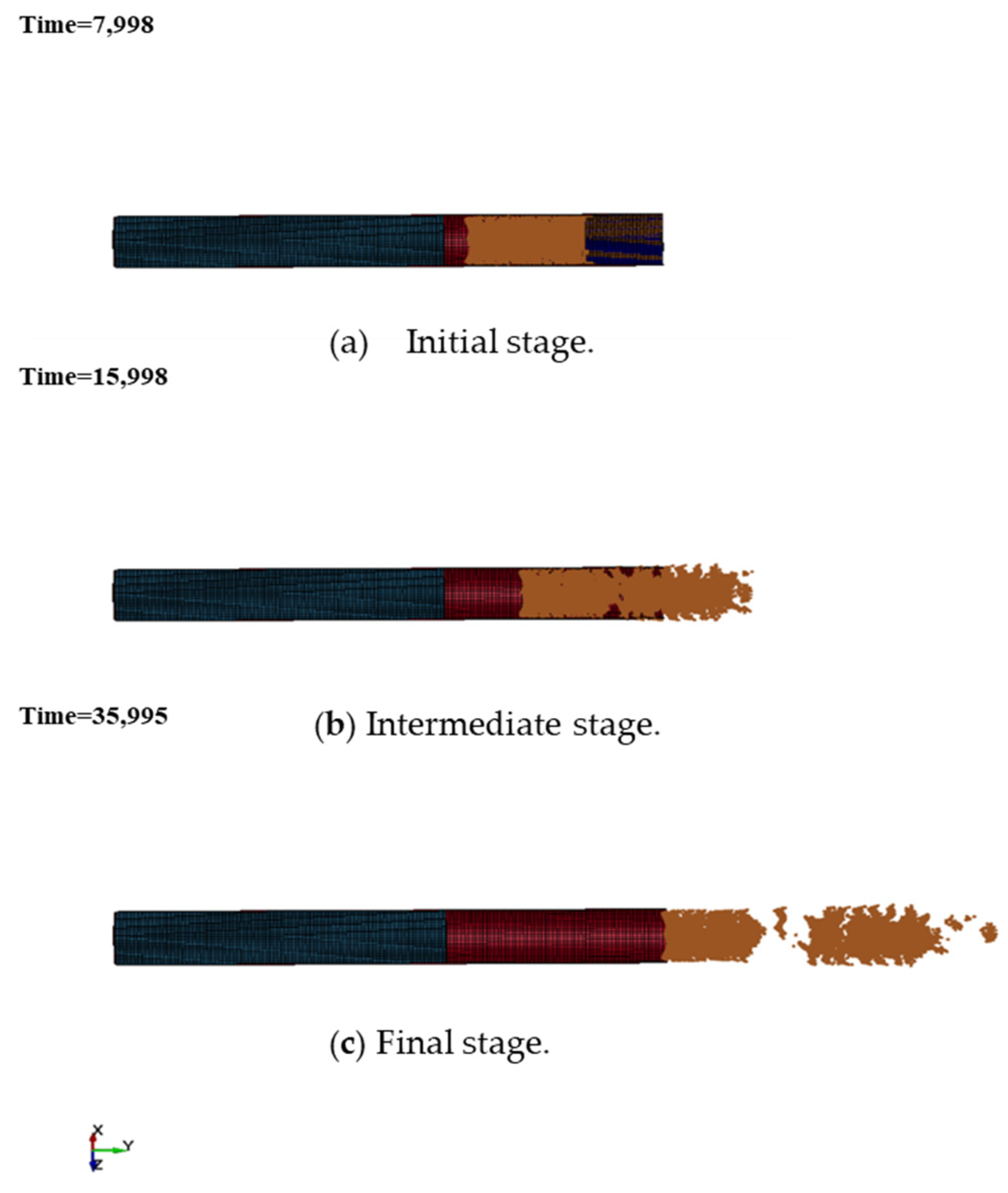
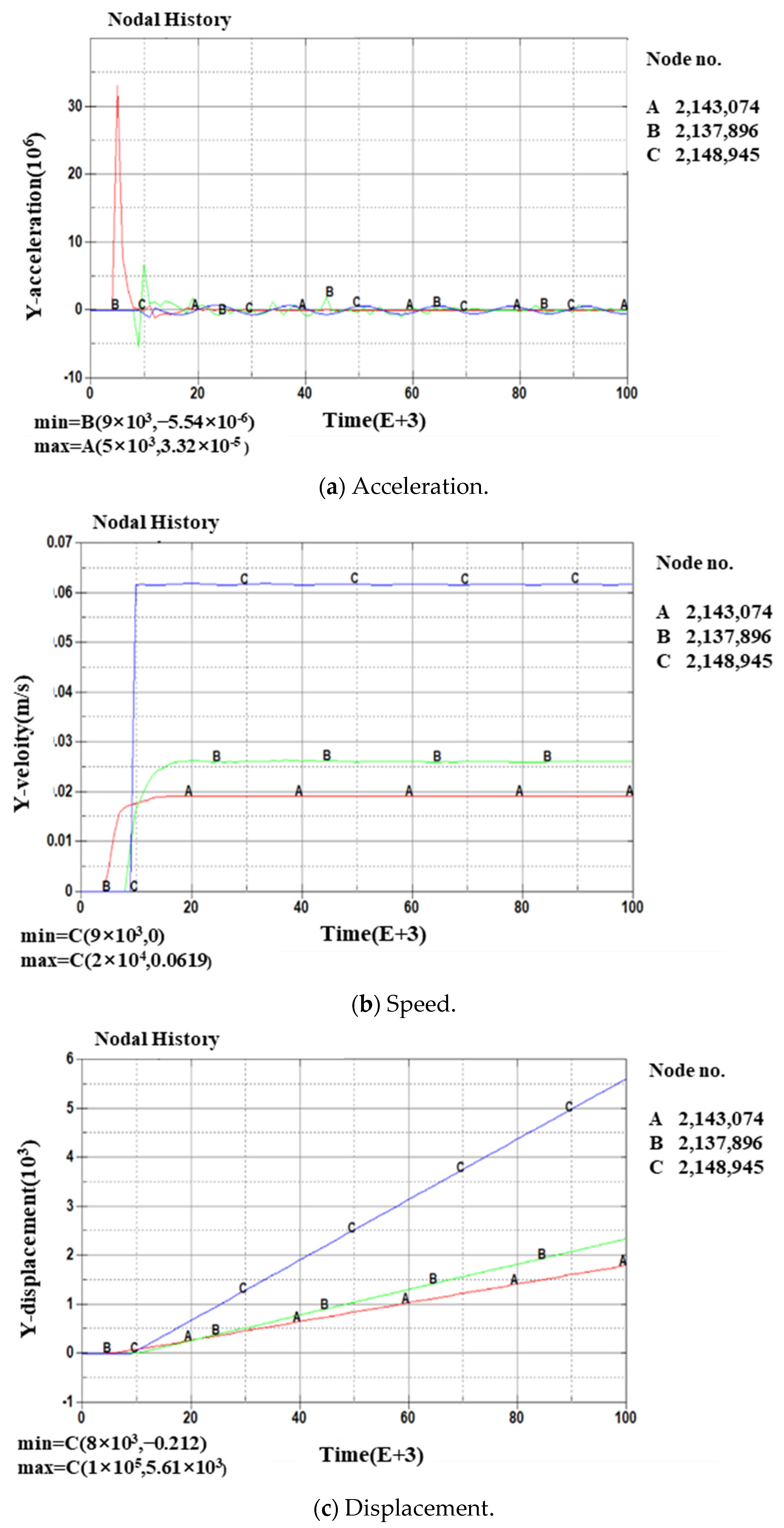
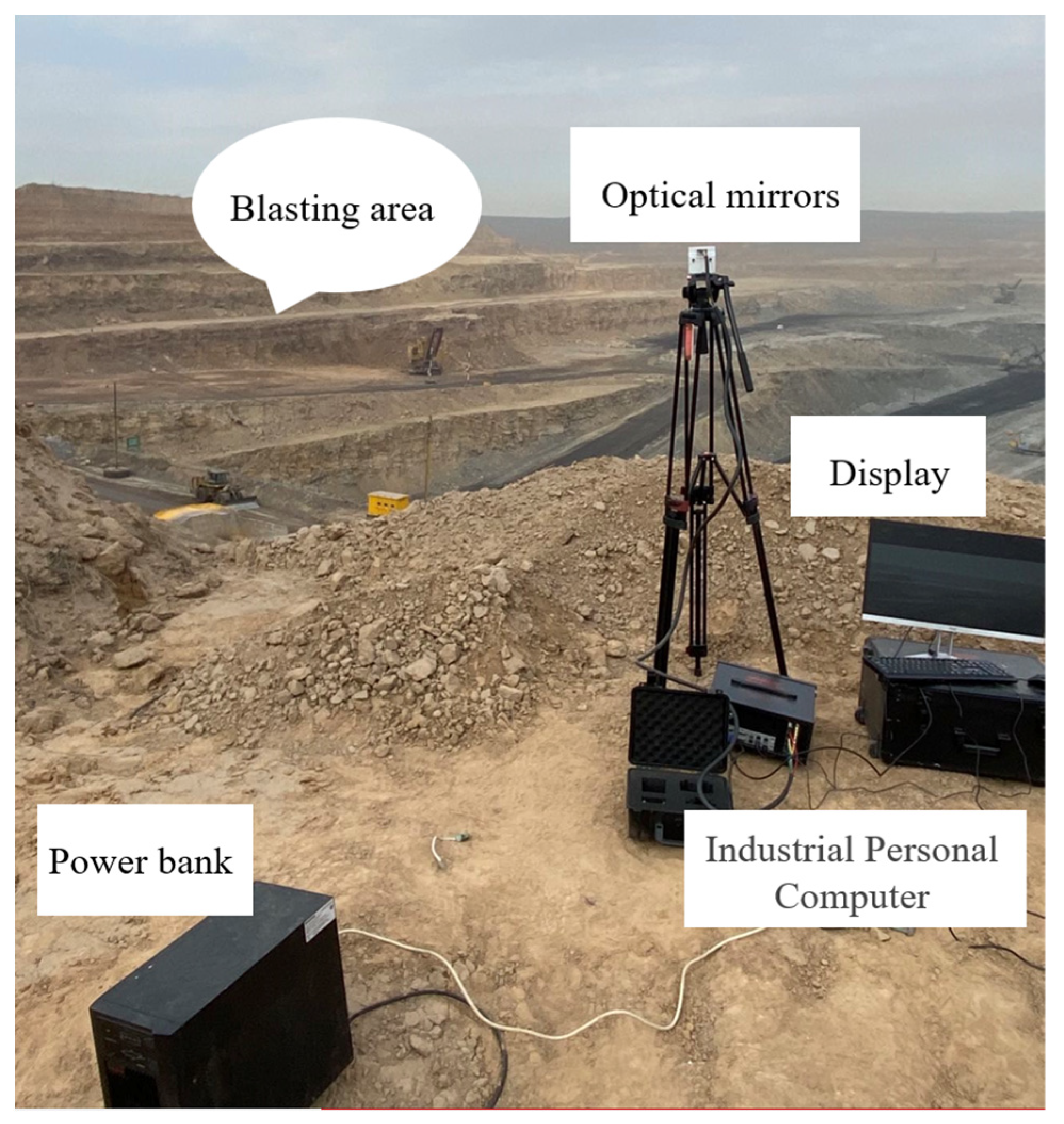
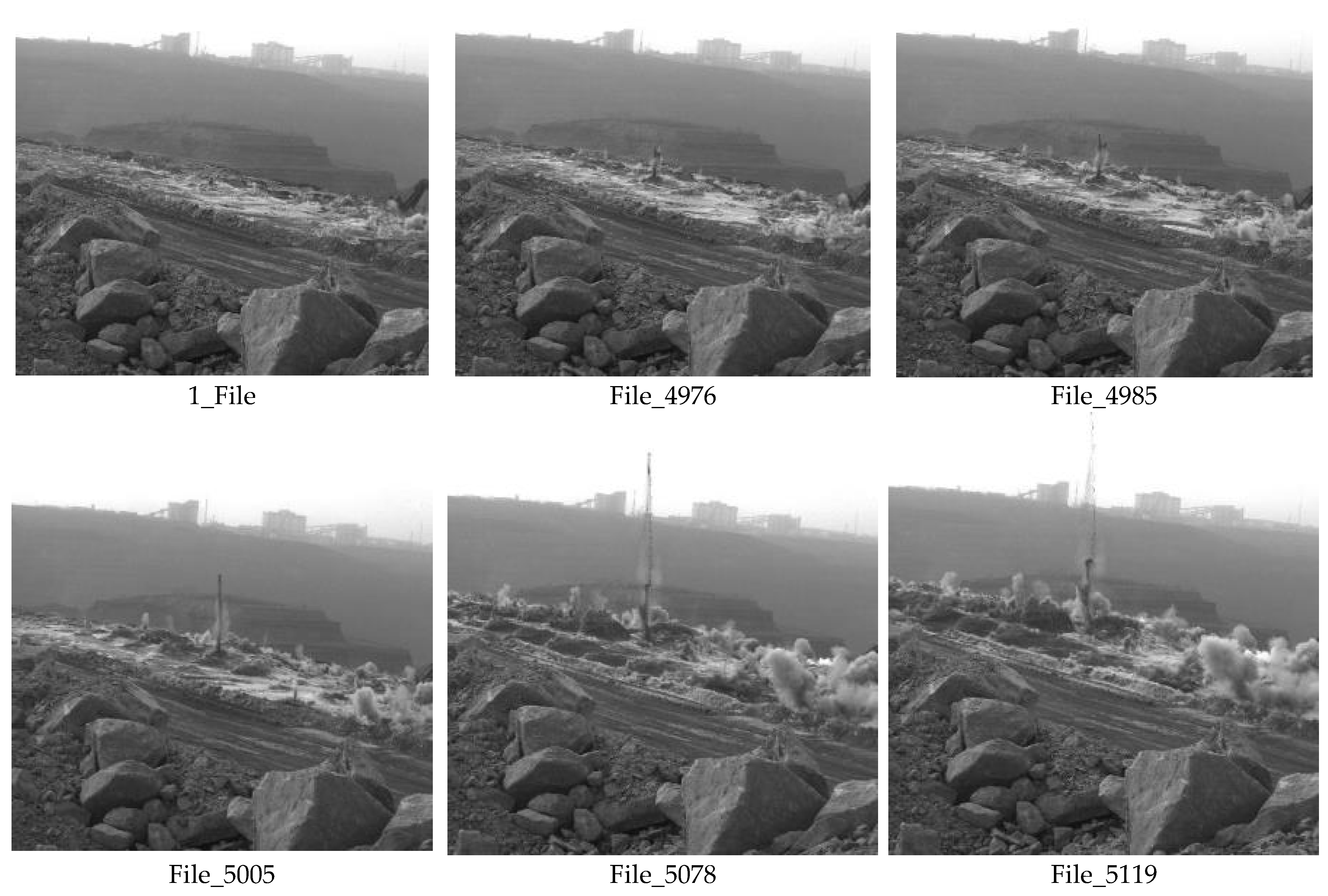
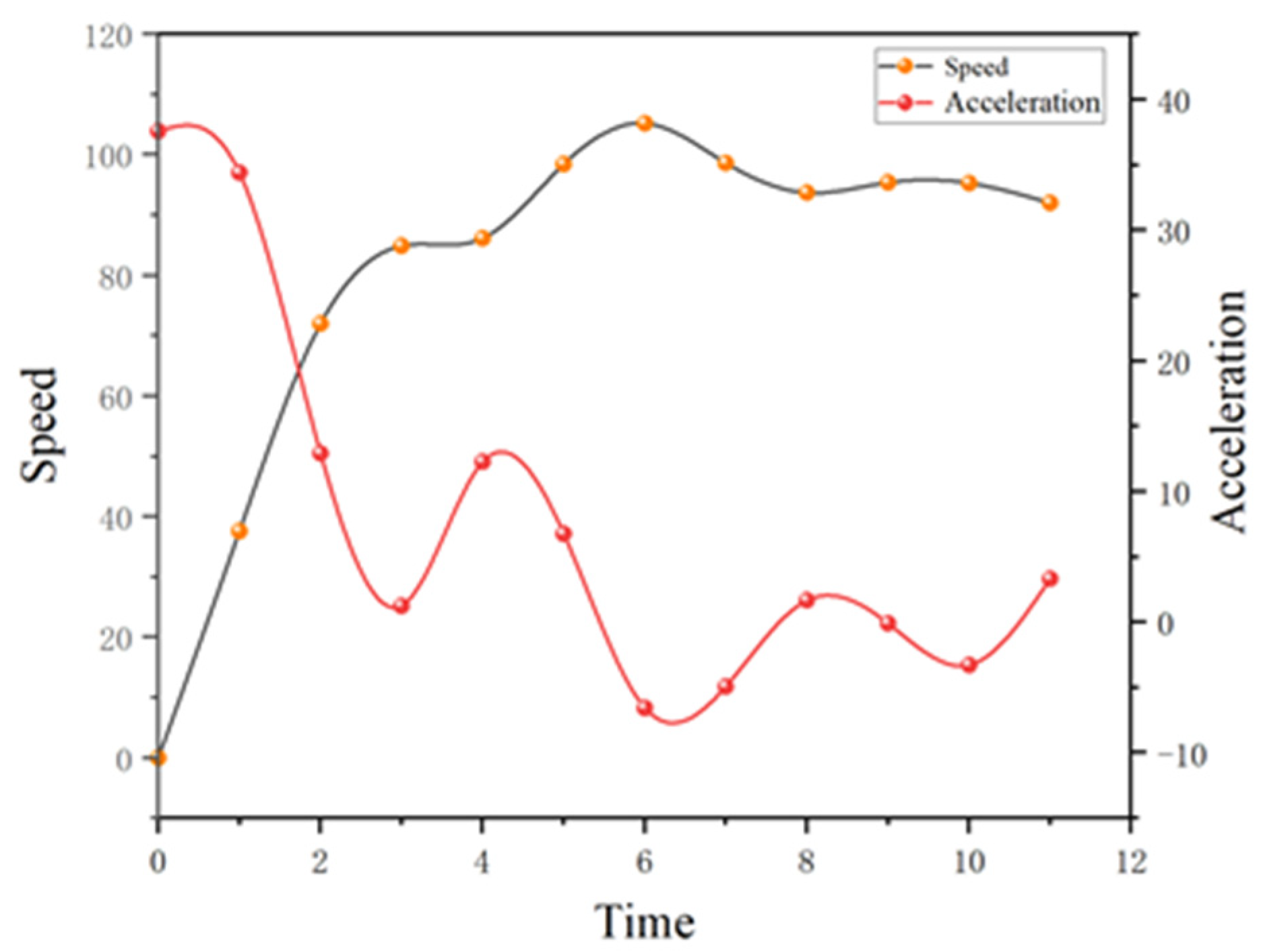
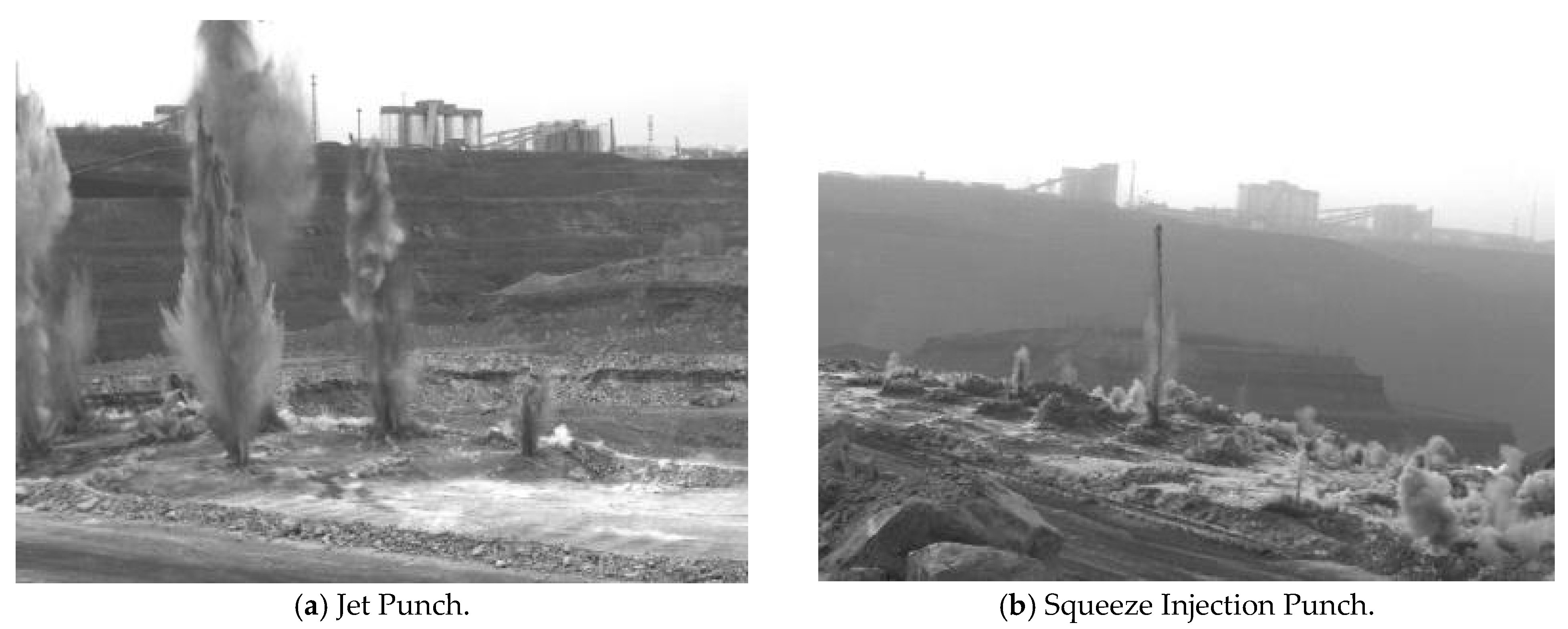
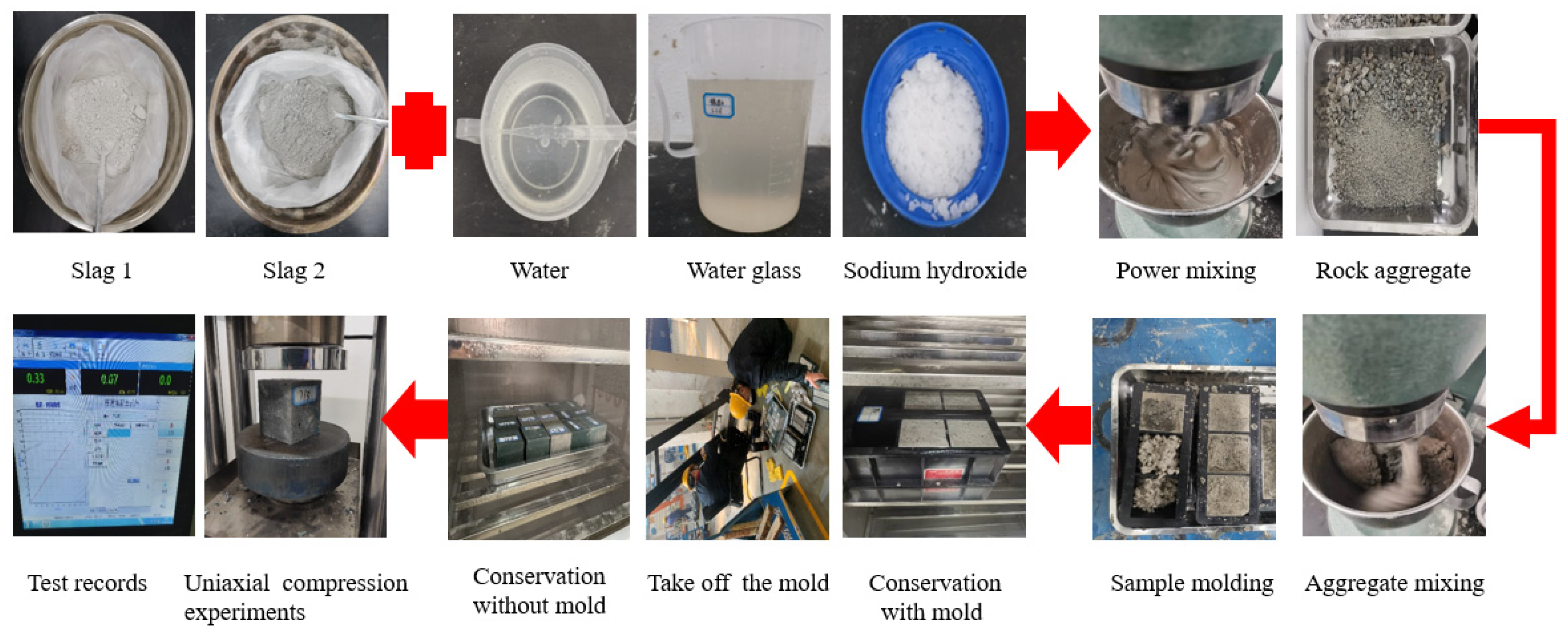
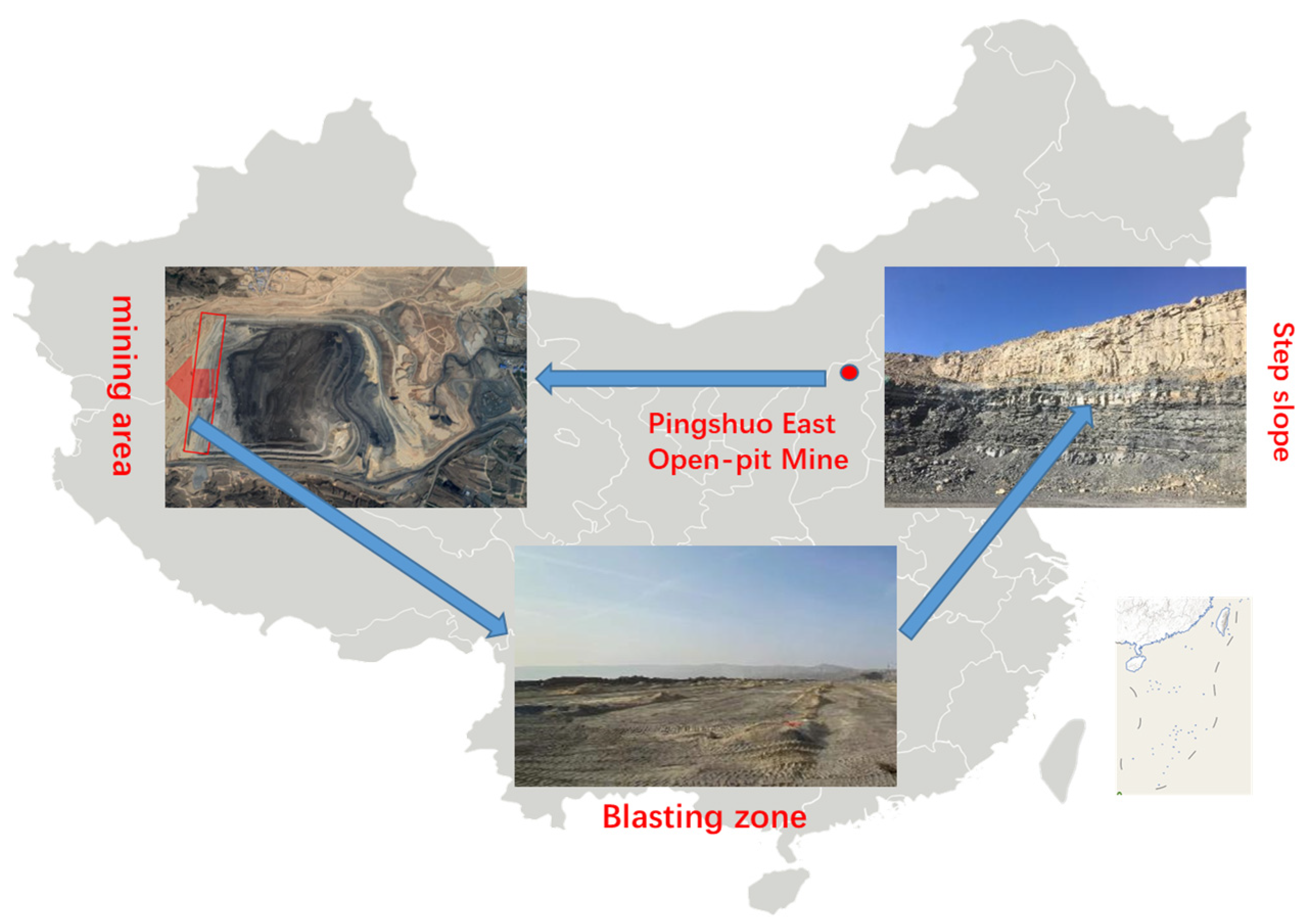
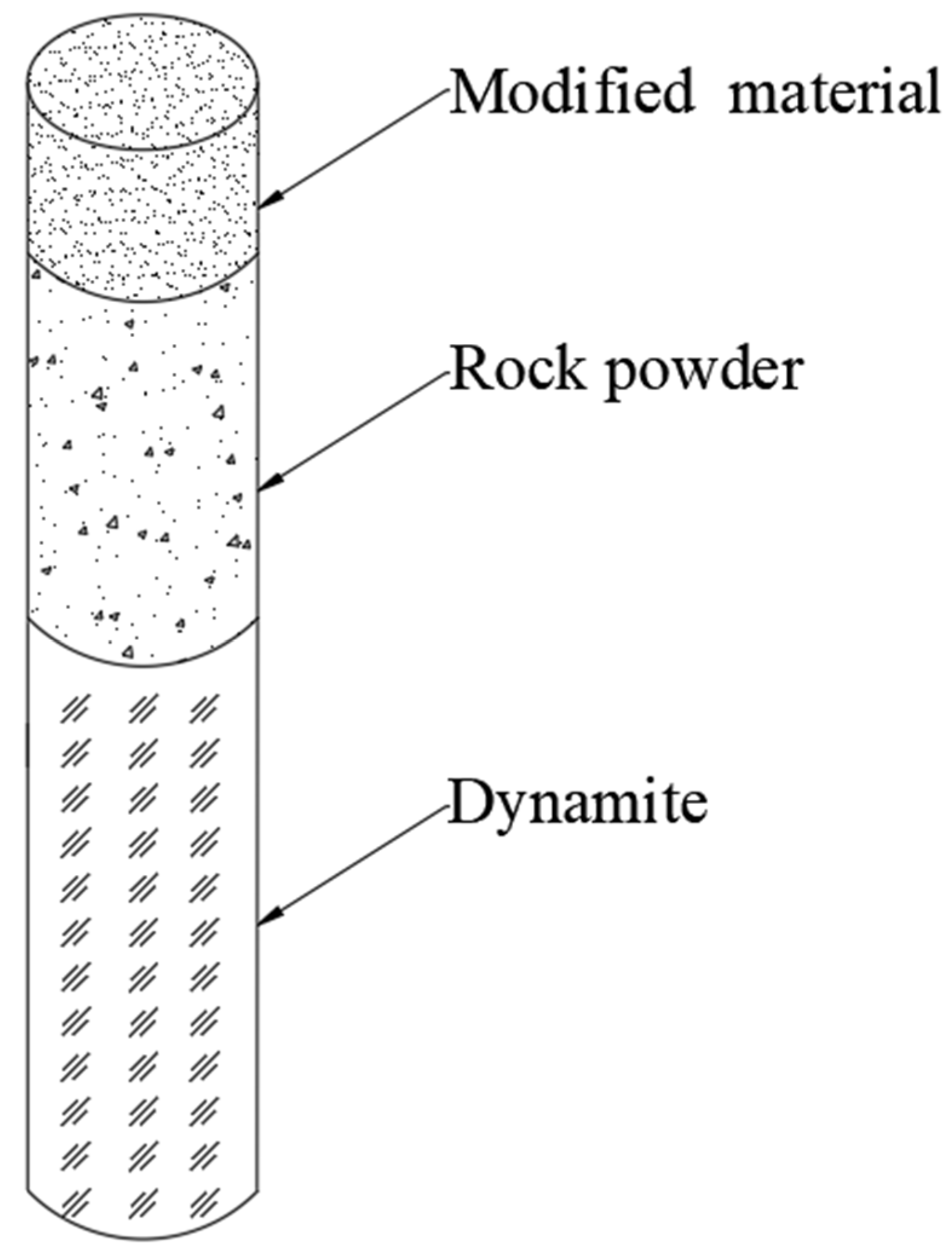
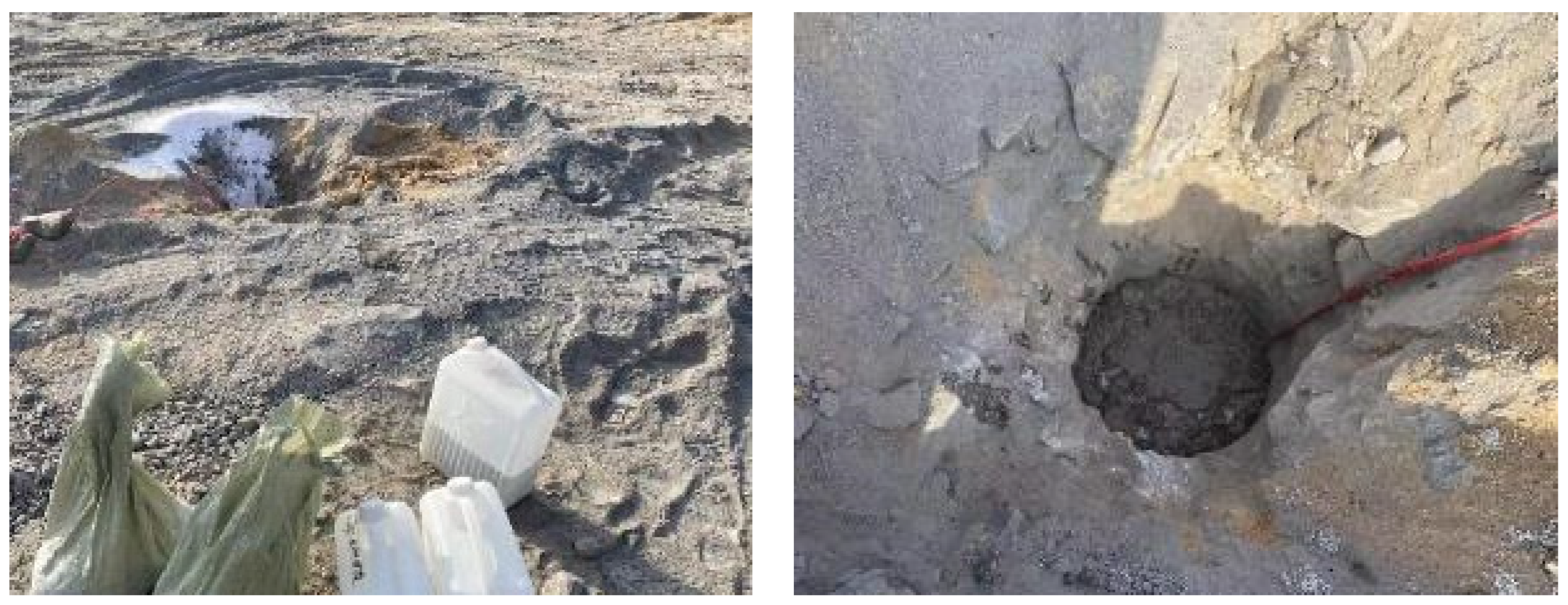


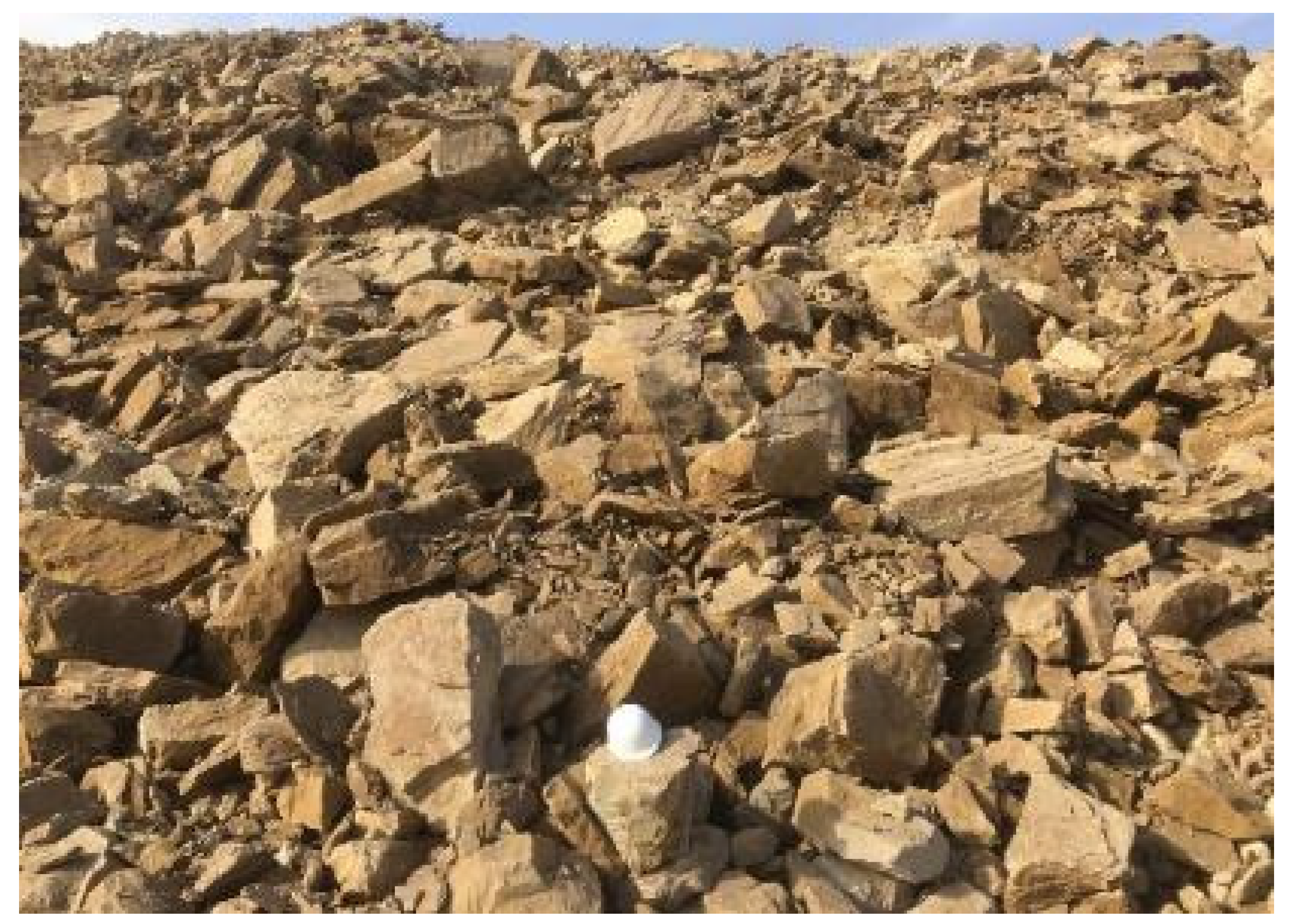
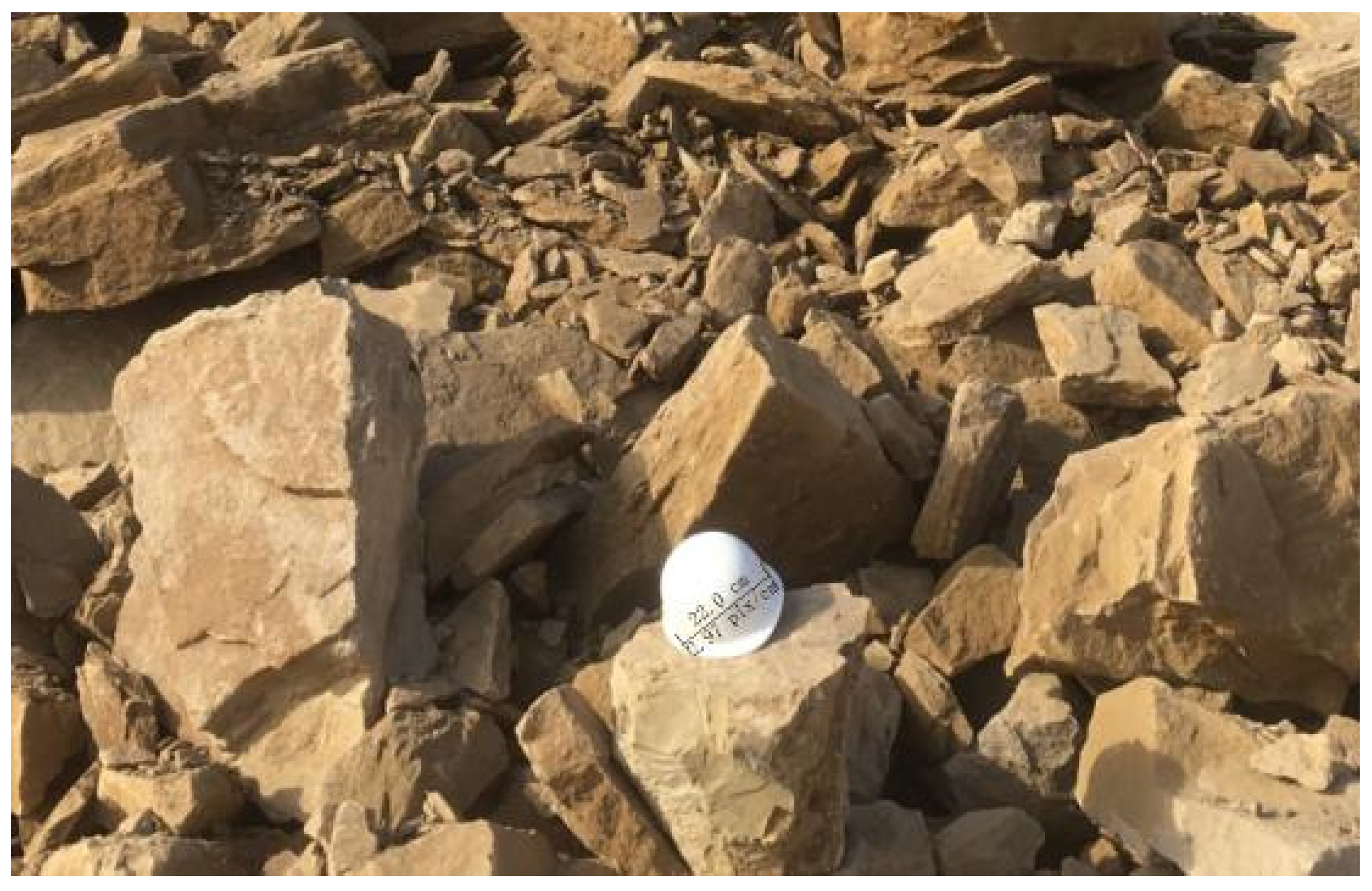
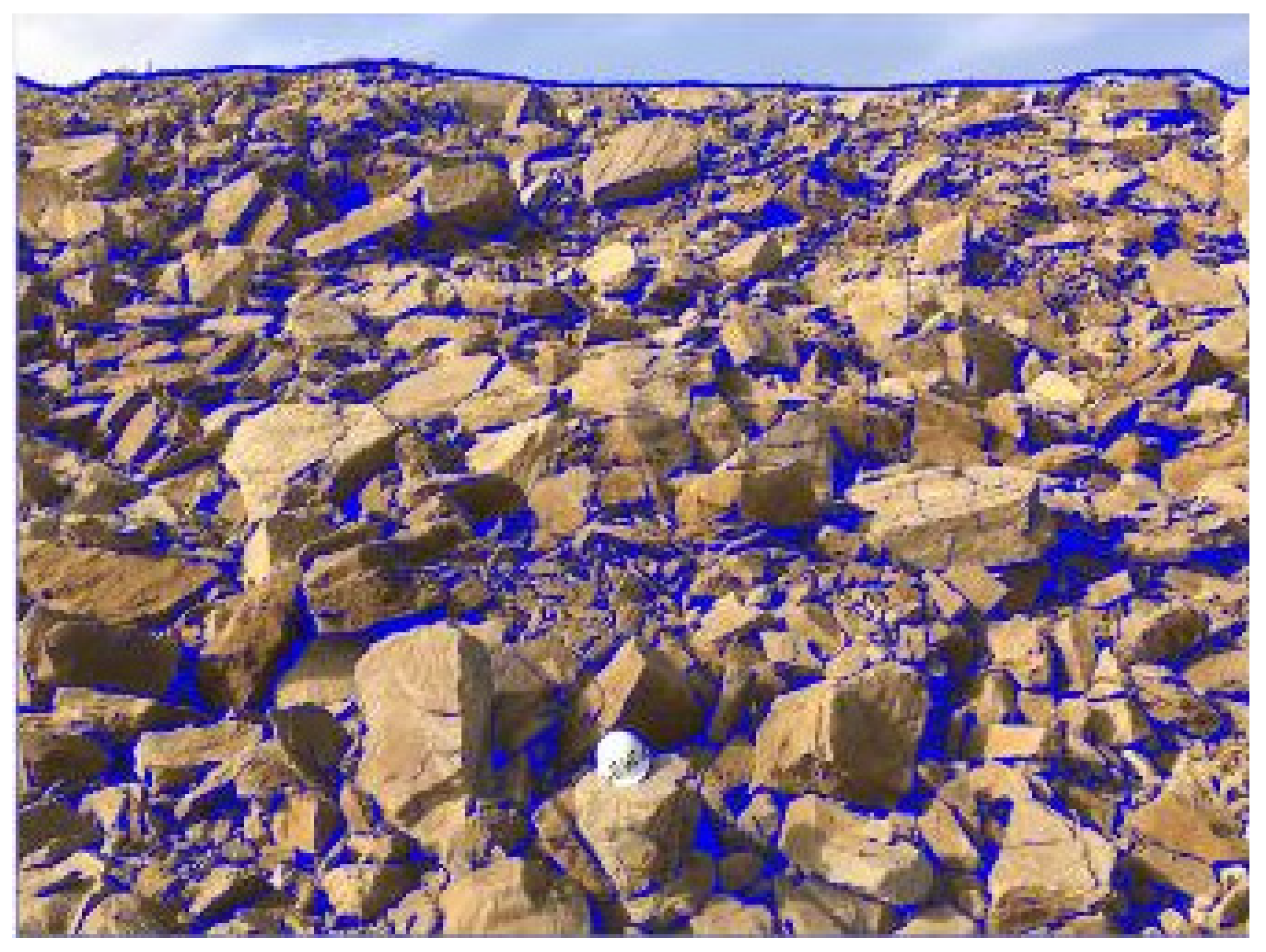

| G/GPa | PC/MPa | FC/MPa | T/MPa | K3/GPa |
|---|---|---|---|---|
| 12.8 | 5.46 | 16.22 | 1.98 | 208 |
| Exposure Time | Capture Frame Rate | Resolution | Lens | Image Formats | Image Depth |
|---|---|---|---|---|---|
| 500 | 1500 | 1280 × 860 | Nikon 35 mm | Grayscale images | 8 bit |
| Time Interval | Corresponding Frame | Displacement (m) | Speed (m/s) | Acceleration (m/s2) |
|---|---|---|---|---|
| 0 | 4948 | 0 | 0 | 37.59 |
| 1 | 4958 | 39.10 | 37.59 | 34.40 |
| 2 | 4968 | 153.37 | 71.99 | 12.93 |
| 3 | 4978 | 254.88 | 84.91 | 1.25 |
| 4 | 4988 | 358.44 | 86.17 | 12.28 |
| 5 | 4998 | 475.67 | 98.45 | 6.76 |
| 6 | 5008 | 612.65 | 105.22 | −6.56 |
| 7 | 5018 | 723.54 | 98.65 | −4.93 |
| 8 | 5028 | 840.59 | 93.72 | 1.67 |
| 9 | 5038 | 951.70 | 95.39 | −0.10 |
| 10 | 5048 | 1075.22 | 95.30 | −3.28 |
| 11 | 5058 | 1179.48 | 92.03 | 3.33 |
| Grouping | Rock Powder/g | Slag/g | NaOH Solution (30%)/g | Water Glass (Modulus 3.2)/g | Water/g | Maintenance Time/h |
|---|---|---|---|---|---|---|
| A1 | 500 | 150 | 80 | 100 | 80 | 6 |
| A2 | 500 | 150 | 80 | 100 | 80 | 6 |
| A3 | 500 | 200 | 40 | 120 | 40 | 6 |
| A4 | 700 | 150 | 40 | 120 | 40 | 6 |
| A5 | 700 | 200 | 40 | 140 | 40 | 6 |
| A6 | 700 | 200 | 40 | 140 | 80 | 6 |
| Group | Compressive Strength (MPa) | Average Compressive Strength (MPa) |
|---|---|---|
| A3 | 10.79 | 11.92 |
| 13.10 | ||
| 12.76 | ||
| 10.99 | ||
| 11.94 | ||
| A5 | 13.34 | 12.43 |
| 12.51 | ||
| 11.86 | ||
| 12.58 | ||
| 11.85 | ||
| A6 | 15.82 | 16.22 |
| 15.29 | ||
| 16.44 | ||
| 15.92 | ||
| 17.62 |
| Hole Diameter (mm) | Hole Distance (m) | Row Distance (m) | Slope Top Line (m) | Slope Bottom Line (m) | Step Height (m) | Design Unit Consumption (kg/m3) |
|---|---|---|---|---|---|---|
| 250 | 8 | 7 | 4.5–5.0 | 6.5 | 14–21.6 | 0.46 |
| Average hole depth (m) | Over depth (m) | Single hole dosage (kg) | Total dosage (kg) | Packet diameter (mm) | Plugging length (m) | |
| 18.4 | 1.5 | 399–655.2 | 84,180 | 250 | 6.0–7.5 | |
| Charging structure and description | Comparison area using porous granular ammonium oil explosives for segmental charging, an overall blockage of 6.0–7.5 m. Test area using porous granular ammonium oil explosives for segmental charging, the middle air spacer interval of 1 m, blockage using a compound structure, the upper 2 m for geopolymer, the lower 3.5 m for rock powder blockage as shown in Figure 15. | |||||
| Material Name | Main Components | Total Amount of Material/The Hole Per Linear Meter | Instructions for Use |
|---|---|---|---|
| Rock powder | Powdered sand rock, sandstone and other drilling powder | 253 kg | Calculated by dry density 1.8 g/cm3 |
| Slag | Slag powder | 72 kg | Ordinary slag powder |
| NaOH solution (30%) | Sandstone | 15 kg | Self-assembled |
| Water glass | Sodium silicate | 51 kg | Modulus 3.5 |
| water | H2O | 30 kg | Common tap water |
Disclaimer/Publisher’s Note: The statements, opinions and data contained in all publications are solely those of the individual author(s) and contributor(s) and not of MDPI and/or the editor(s). MDPI and/or the editor(s) disclaim responsibility for any injury to people or property resulting from any ideas, methods, instructions or products referred to in the content. |
© 2023 by the authors. Licensee MDPI, Basel, Switzerland. This article is an open access article distributed under the terms and conditions of the Creative Commons Attribution (CC BY) license (https://creativecommons.org/licenses/by/4.0/).
Share and Cite
Ding, X.; Ao, Z.; Li, X.; Xiao, S.; Wu, M.; Xing, B.; Ge, R.; Zhang, D. The Mechanism of Plugging Open-Pit Mine Cannon Holes and the Modification of Plugging Materials. Sustainability 2023, 15, 4257. https://doi.org/10.3390/su15054257
Ding X, Ao Z, Li X, Xiao S, Wu M, Xing B, Ge R, Zhang D. The Mechanism of Plugging Open-Pit Mine Cannon Holes and the Modification of Plugging Materials. Sustainability. 2023; 15(5):4257. https://doi.org/10.3390/su15054257
Chicago/Turabian StyleDing, Xiaohua, Zhongchen Ao, Xiaoshuang Li, Shuangshuang Xiao, Mao Wu, Bokang Xing, Ruhao Ge, and Donghua Zhang. 2023. "The Mechanism of Plugging Open-Pit Mine Cannon Holes and the Modification of Plugging Materials" Sustainability 15, no. 5: 4257. https://doi.org/10.3390/su15054257
APA StyleDing, X., Ao, Z., Li, X., Xiao, S., Wu, M., Xing, B., Ge, R., & Zhang, D. (2023). The Mechanism of Plugging Open-Pit Mine Cannon Holes and the Modification of Plugging Materials. Sustainability, 15(5), 4257. https://doi.org/10.3390/su15054257







